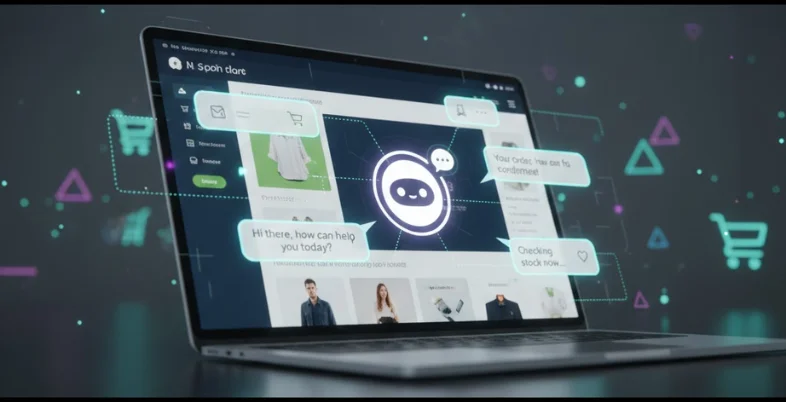You had a perfect sales call—the client nodded happily, bought into the vision, and made you think they’ll give you the green light.
You excitedly delivered to quote (a little earlier than promised) and followed up with a professional, but friendly email. Then, you waited, and waited, and… nothing, but the sound of virtual crickets.
Somewhere between “We love this” and “Let’s move forward,” the customer’s momentum came to a screeching halt. Was it your pricing? Maybe your sales call wasn’t as good as you thought. Did you (or your team) really send out the quote?
The truth is that you may never know. But this doesn’t mean you should just accept defeat. There are things you can do, and today, we’ll start with the quote. Keep reading if you want to learn how to turn website quotes into paying clients.
The 5 Core Elements of a Successful Quote

Every business has its own flavor of quote, but the building blocks behind a truly compelling one? Those are universal.
A high-performing quote doesn’t just talk about costs—it reduces perceived risk, clarifies expectations, and spells out ROI in a way that makes decision-makers think, “We’d be losing money not to do this.”
To do this, you need to work on these five core elements:
1. The Value Proposition
This is the executive summary of your quote—the section that does the heavy lifting. It’s the first thing decision-makers read to check if the price you’re asking is justified.
Start by restating the problem in their own terms. For example: “Your current site’s 55% mobile bounce rate is severely limiting your lead volume.”
Next, explain how your solution fixes that problem and what outcome they can expect. Something like: “By implementing a mobile-first redesign, we expect to reduce bounce rates to under 30%, generating around 20 additional qualified leads per month.”
Wrap up with your USP—the reason you’re the smartest partner to make this happen. For instance: “Our team specializes in SEO-led design for B2B SaaS companies and consistently delivers results above industry averages.”
2. The Detailed Scope of Work
This section makes sure everyone is on the same page regarding deliverables. To make things crystal clear, include three items: specific deliverables, explicit exclusions, and milestones and timeline.
For deliverables, use clear, unambiguous language. List exactly what you are building.
Example: “Up to 15 unique, fully responsive, custom-designed page templates.” (Not just “A new website.”)
The exclusions are just as important as they manage expectations. State clearly what is not included.
Example: “The quote excludes the cost of premium stock photography licenses (to be sourced by the client) and the creation of content for pages 16 and beyond.”
Lastly, break the project down into manageable phases (Discovery, Design, Development, Launch, QA) with estimated duration for each. This highlights your team’s professionalism and instills confidence in the client.
3. The Pricing & Payment Structure
The winning approach here is clarity and structure. If you want clients to understand your pricing without squinting at the fine print, switch from hourly breakdowns to value-based itemization.
For instance:
- Conversion-Focused Homepage Design: $5,000
- CRM Integration & Automation Setup: $7,500
This gives clients immediate context for the investment and makes the proposal easier to evaluate than a list of hours and tasks.
It’s also smart to offer two or three package tiers. This shifts the decision from “Do we move forward?” to “Which level fits us best?”
Lastly, include a clear payment schedule with upfront deposits and subsequent payments tied to project milestones. This minimizes your financial risk and proves that payment is linked to progress.
4. The Client Responsibilities Section
You’re not the only one with obligations in this partnership. Your client must also be involved, and you must make this clear starting with the quote.
Make a clear list of what you need from the client and when. Include mentions like “Final, signed-off website copy for the first 5 pages required within 10 days of project kick-off,” or “Dedicated point of contact (PoC) for daily communication and timely feedback.”
Also, firmly state how delays in the client’s responsibilities will affect the timeline (e.g., “Client delays exceeding 7 business days may require a re-scoping and timeline extension.”).
5. The Terms and Next Steps
How you end your quote is just as important as the Value Proposition. Here are a few tricks to move the talks into the execution phase:
- Give the proposal an expiration date (15 to 30 days). This is a gentle urgency trigger to prevent indefinite delays.
- Briefly summarize the standard terms (ownership rights, maintenance period, warranties), so the client knows what they own upon final payment.
- Include a clear CTA that explains how to accept the quote.
Bonus: The Design
Think of the quote as the bridge between marketing and sales. It’s the document that gives leads that final push toward a contract, and its design contributes directly to your perceived professionalism, reliability, and ultimately, your chances of winning the business.
If you are quoting on a website design project, your quote document is the client’s first tangible example of your design capabilities. A polished, professional, and well-designed quote suggests that your final product (the website) will also be high-quality.
Quick tip: Check out this free template download to get a better idea of quote designs that look professional without being cold.
As you’ll see, good design uses white space, clear headings, and typography to guide the reader’s eye. It ensures the most critical information—the Value Proposition, the Scope, and the Pricing—is easy to find and digest, even if the client only skims the document.
The Click-to-Contract Path

While many companies use lead generation services to speed up the process, if you want replicable results that bring in new clients long-term, it’s best to create an organic click-to-contract path.
For this, you’ll need an optimized digital marketing and sales funnel designed to capture new leads, qualify them, and proposition them.
Here’s how to structure your funnel for maximum results:
Phase 1: Acquisition and Lead Qualification
Create a dedicated landing page focused on conversion that drives users to a low-friction quote form. The form’s main job is to capture key qualification data (contact info, project type, and budget range).
Quick tip: Use specific, compelling CTAs that address the needs of high-intent users.
Phase 2: Qualification, Quote Generation, and Presentation
Each form submission triggers a CRM automation that automatically assigns a score to the lead based on the budget range and any other qualifying data captured. Next, the CRM sends a personalized follow-up email to the mid-and low-scoring leads with transparent price ranges and other important details.
Your sales reps will next call the highest-scored leads to learn more about their pain points, goals, and decision-making process. Based on this information, they’ll generate a quote and schedule a meeting to walk the client through it.
During this meeting, your sales rep will explain the value of each line item and address any objections in real time. The final quote and proposal are then sent for further discussions and approval.
Phase 3: Tracking, Negotiation, and Contract
You can use tracking tools to monitor the client’s engagement with the quote. This will tell you the sections they focus on the most and whether they’re interested.
There may be some back-and-forth regarding the pricing, milestones, deadlines, and so on. Once all parties agree upon terms, it’s time to sign the contract and start the work.
Wrap Up
You’ve got the blueprint to turn browsers into buyers—now it’s time to make it happen. If your goal is to Turn Website Quotes Into Paying Clients, start by auditing your quotes, spotting the gaps, and upgrading your process to match the pros. Do this, and you should start closing deals around the clock.






